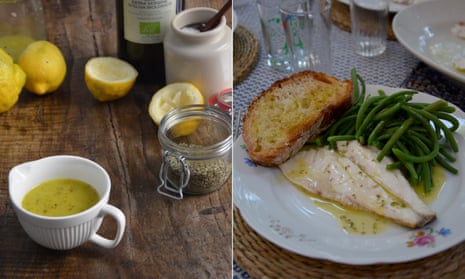Aeschylus was sitting on a rock, probably thinking or writing, according to his habit. Mistaking the bald and shining head of the poet for a rock on which to break open his prey, an eagle flying overhead dropped a tortoise. According to legend, the tortoise hit the mark, instantly killing the Greek tragedian who, having returned to the south coast of Sicily in 453BC, was seeking refuge in the wheat-bearing land of Gela.
The poet Archestratus was also from Gela. Unlike the bald and unfortunate Aeschylus, Archestratus’ demise was not tragic. In fact, quite the opposite. A proud glutton, Archestratus was a 4th-century BC Jay Rayner, roaming the Mediterranean eating and writing humorous didactic poems advising people where to find the best food, notably fish. Fragments of his poems still exist today, incorporated into The Deipnosophists (The Sophists at Dinner), according to writer Mary Taylor Simeti (whose novel, On Persephone’s Island, and books on Sicilian food I highly recommend). The fragments are a blueprint for modern cookbooks, advising us, for example, how to cook tuna: “Slice it and roast it all rightly, sprinkling just a little salt, and buttering it with oil.”
These days, references to Gela are more likely about the looming presence of an oil refinery, or the dark side of the exceptional tomatoes that grow on this section of hot, salted coast. Guide books not only advise you to drive past Gela, but to speed up and avert your eyes. For us, Gela is our summer home; the now-defunct oil refinery, with its red-and-white chimney, a stripy landmark as we approach my partner’s home town for a month of family, sausages and red mullet cooked on the roof, bread covered with sesame seeds, days by the sea and watermelons for miles. There’s also salmoriglio, a sauce that flavours our summer and meals, and also one that translates anywhere you can find olive oil, lemon juice, garlic and oregano.
Like so many sauce recipes, you don’t really need one for salmoriglio. However, an idea of proportions might help. Pound, crush or very finely chop a clove or two of garlic with a pinch of salt. Add the juice of a lemon (about 100ml), 200ml extra-virgin olive oil and a generous pinch of dried oregano. You can also add a pinch of red chilli or some chopped parsley, if you like. You can make it in the blender – in fact, it creates a cloudy sauce with real texture – but I tend to crush the garlic and salt in a mortar, scrape it into a jar with the oil, lemon and oregano, and shake madly. This also means that leftovers are ready to be stored in the fridge.
You can use fresh oregano, if you wish; the scent of the small leaves remind you that oregano and mint are relatives. Dried, however, is when oregano comes into its own, with the musty perfume deepening. I used to find oregano perfume unpleasantly strong – dusty, even. I now realise this was because it was forgotten in a drawer for years and years, pulled out and used unknowingly. The flavour of oregano is best brought out by braising, stewing or in residual heat, which is why it is sprinkled in or on top of stews, rather than fried. The best oregano is the kind in dry bunches: rub a stem between your palms over a sheet of kitchen towel, then keep any left over in a jar, and the bunch in a dry place, but not for too long. Alternatively, you can use fresh marjoram.
At the Anna Tasca Lanza Cooking School in the Sicilian countryside, they serve salmoriglio in a gravy boat to be poured on warm vegetables: steamed broccoli, slices of courgette or heaps of steamed greens. “Pass me that boat of deliciousness,” asked my friend the last time we were at the school.
In Gela, I marinate thick slices of aubergine in salmoriglio (or, as my father-in-law says, “salamarigghiu”), leaving them for about 20 minutes so they sop up the flavours, before searing them on a ridged grill. I also marinate fish (swordfish or cernia) or grill whole fillets on our bandy-legged charcoal grill, then pour over the sauce while still hot off the grill. Heat is important for salmoriglio: it wakes up the flavours like an alarm – especially the garlic and oregano, with its musty, peppery perfume, inseparable from the harshly beautiful and shrubby Sicilian landscape where it grows, and tortoises fall.

Comments (…)
Sign in or create your Guardian account to join the discussion